|
|
|
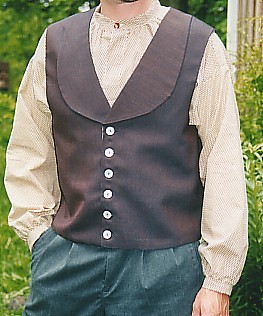
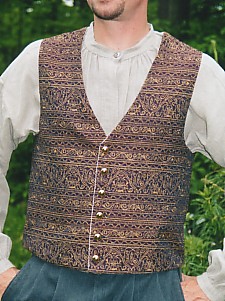
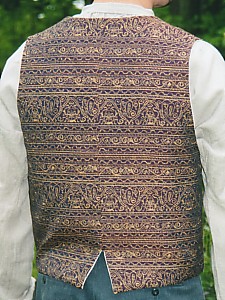
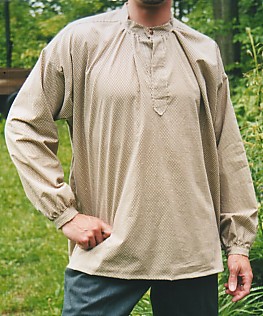
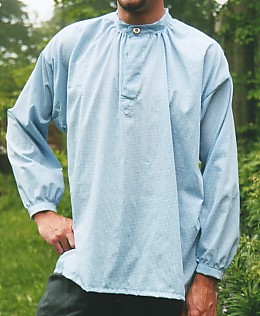
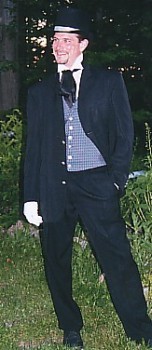
For our local Civil War reenactment I made a bunch
of mens shirts and waistcoats (or vests). I used the same fabric on the
back as the front. Most vest -backs of the era would be of another less expensive
fabric unless you had a little more money than most. Most of my costumes tend
to be of the higher classes. The collar would only be on the front for the same
reasons as above. Buttons would be of metal, wood, bone, shell or mother of
pearl. The buttons would give away your social standing just as much as the fabric
if not more. |
The waistcoat is the personality piece of the man's wardrobe.
Sometimes made from fancy bright colored fabric for the younger more dapper
gentlemen, somber darker colors for older or political figures. |
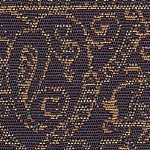
These workshirts are made from 100% cotton. During the war
cotton was harder to get if you lived in the north. So, you made it last and
reused what you could. The print on the right is a civil war reproduction print.
If you ask around you should be able to find prints like these. Quilters are
a good source. One good detail in a shirt for this era is that the buttons don't
go all the way down the front. They used a placket and narrow cuffs on the sleeves. |
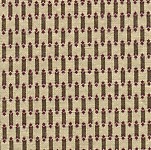
Here is dapper Mr. Doyle. (My hubby puts up with a lot!) This is a example
of a gentleman's evening suit. Long jacket and pants with a fancy waistcoat.
You never took your jacket off. Mostly because the they only wore shirt -fronts.
If you look closely at the photos of the mid 1800's you will most likely
never see a shirt cuff at the end of the sleeve. Unless they wore a pair of removable
cuffs. The collar also removed to clean. Remember, they didn't have washers
and dryers. Collars had lots of different types of folds and different names
for each. Mr. Doyle has a bankers collar. Your top hat and gloves also required
for an evening out. Take your hat off indoors and never take your gloves off
when you dance. (so as to not soil a ladies delicate hands) There is a lot of
etiquette to learn for a gentleman of the 1800's. Check out Mr. and Mrs. Doyle
on the ballgown page. |
Civilian Gents |